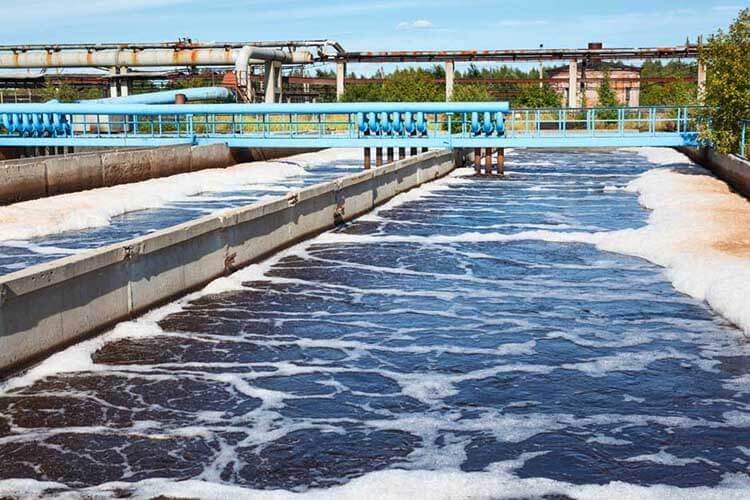
Main Wastewater Treatment Plant

Main Wastewater Treatment Plant: A Critical Component of Sustainability
Introduction:
Wastewater treatment is an essential process that ensures the protection of public health and the environment by effectively treating and disposing of wastewater from residential, commercial, and industrial sources. The Main Wastewater Treatment Plant is a key facility in this process, as it is responsible for treating a significant portion of the wastewater generated in a particular area. This article will explore the importance of Main Wastewater Treatment Plants, their functions, and their role in promoting sustainability.
Overview of Main Wastewater Treatment Plants:
Main Wastewater Treatment Plants are large-scale facilities that are designed to treat a substantial volume of wastewater from a specific region. These plants play a crucial role in removing pollutants from wastewater before it is discharged into the environment. The treatment process involves physical, chemical, and biological processes that work together to remove contaminants and ensure that the treated wastewater meets regulatory standards for safe discharge.
Main Wastewater Treatment Plants typically consist of several stages of treatment, including primary treatment, secondary treatment, and sometimes tertiary treatment. In primary treatment, large solids are removed from the wastewater through processes such as screening and sedimentation. Secondary treatment involves the biological removal of organic matter and nutrients through processes such as activated sludge or trickling filters. Tertiary treatment may be used to further enhance the quality of the treated wastewater through processes such as filtration or disinfection.
Importance of Main Wastewater Treatment Plants:
Main Wastewater Treatment Plants play a crucial role in protecting public health and the environment by treating and removing harmful pollutants from wastewater. Without proper treatment, wastewater can contain a variety of contaminants, including pathogens, nutrients, and toxic chemicals, which can have harmful effects on human health and the environment.
By effectively treating wastewater, Main Wastewater Treatment Plants help to prevent waterborne diseases, protect aquatic ecosystems, and ensure the safety of drinking water sources. In addition, these plants play a key role in promoting sustainability by recycling and reusing treated wastewater for beneficial purposes such as irrigation, industrial processes, and groundwater recharge.
Sustainability Benefits of Main Wastewater Treatment Plants:
Main Wastewater Treatment Plants provide a range of sustainability benefits that contribute to the overall well-being of communities and the environment. Some of the key sustainability benefits of these facilities include:
1. Resource Recovery: Main Wastewater Treatment Plants are increasingly implementing technologies to recover valuable resources from wastewater, such as energy, nutrients, and water. For example, some plants use anaerobic digestion to produce biogas from organic matter in wastewater, which can be used to generate electricity or heat. In addition, nutrient recovery technologies can extract and recycle phosphorus and nitrogen from wastewater for use as fertilizers.
2. Water Reuse: Main Wastewater Treatment Plants are essential for enabling water reuse and increasing the availability of treated wastewater for non-potable applications. By treating wastewater to high standards, these plants can produce reclaimed water that is suitable for irrigation, industrial processes, and aquifer recharge. Water reuse helps to conserve freshwater resources, reduce dependency on traditional water sources, and protect ecosystems from excessive water withdrawals.
3. Climate Resilience: Main Wastewater Treatment Plants play a critical role in enhancing the climate resilience of communities by effectively managing stormwater and reducing the risk of flooding and pollution. By capturing and treating stormwater runoff, these plants help to prevent contaminants from entering water bodies and protect infrastructure from damage. In addition, green infrastructure practices, such as rain gardens and permeable pavement, can be integrated into wastewater treatment plant design to enhance flood control and reduce urban heat island effects.
Case Study: Main Wastewater Treatment Plant in San Francisco
The Southeast Treatment Plant (SEP) is one of the largest wastewater treatment facilities in the United States, serving the city of San Francisco and neighboring communities. The plant has a treatment capacity of 320 million gallons per day and treats approximately 80% of the city’s wastewater. SEP utilizes advanced treatment processes, including primary and secondary treatment, UV disinfection, and ozonation, to produce high-quality effluent that meets regulatory standards for discharge into the San Francisco Bay.
SEP has implemented several sustainability initiatives to reduce its environmental footprint and promote resource recovery. The plant captures biogas generated during anaerobic digestion of biosolids and uses it to generate renewable electricity, meeting a significant portion of the plant’s energy needs. In addition, SEP has implemented water reuse programs to produce reclaimed water for irrigation and industrial use, reducing the demand for freshwater sources.
External Links:
1. San Francisco Public Utilities Commission. “Southeast Treatment Plant.” https://www.sfwater.org/index.aspx?page=48
Conclusion:
Main Wastewater Treatment Plants are essential components of a sustainable and resilient urban infrastructure, providing critical services for protecting public health, preserving water resources, and promoting environmental quality. These facilities play a key role in treating and managing wastewater to ensure safe discharge into the environment, while also maximizing resource recovery and promoting water reuse.
By implementing innovative technologies and sustainable practices, Main Wastewater Treatment Plants can enhance their efficiency, reduce their environmental impact, and contribute to the overall well-being of communities. As cities continue to grow and face increasing challenges related to water scarcity, climate change, and environmental pollution, the importance of Main Wastewater Treatment Plants in promoting sustainable urban development will only continue to grow.
